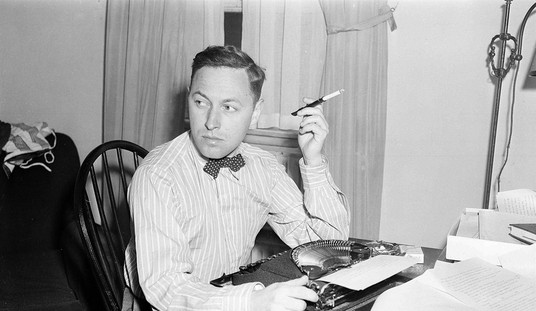One of the casualties of the Common Core standards may be that this generation of children will never learn cursive handwriting because the new standards emphasize keyboard skills and fail to include cursive. Currently, at least 41 states do not require that students learn to read and write in cursive, with many states leaving the decision up to individual school districts. In Ohio, prior to the implementation of the Common Core standards, the state recommended that children learn cursive in grades 3 to 4. Now, it’s optional. Between the emphasis on keyboard skills in the Common Core and the fact that it will not be included in testing (tests are administered via computer), schools are likely to continue to de-emphasize what once was a mandatory skill for all school children.
To be fair, the decline in cursive began before the onset of Common Core. In 2006 only fifteen percent of students taking the SAT wrote their essay answers in cursive and in 2007, ten percent of teachers said their schools no longer taught it.
Proponents of cursive handwriting point to the benefits: improved fine motor skills, development in thinking, language and working memory and increased speed and efficiency. But perhaps the greatest loss will be the ability to read original historical documents. Students who are not taught to read in cursive will miss out on both important documents like the Declaration of Independence and more trivial pieces of the American story, like signed photographs from celebrities.
Below are some examples of what the Common Core generation will miss if we neglect to teach them cursive:
1. The U.S. Declaration of Independence
Though Thomas Jefferson is credited with writing the Declaration of Independence, master penman Timothy Matlack was recruited to put a feather quill pen to parchment on the original document. In those days, elegant penmanship was a considered a sign of social status and master penmen like Matlack were commissioned to copy important documents like deeds, birth and marriage certificates. Future Americans who visit the National Archives to see the Declaration of Independence won’t have the thrill their predecessors experienced of squinting at the faded cursive words and John Hancock’s signature — they’ll have to rely on the printed transcript.
2. Census Records
U.S. Census records can be important clues whether one is researching a history project or following genealogy trails. Unfortunately for today’s students, they won’t be able to read most of the records from before the first half of the 1900s — they’re almost all in cursive. They won’t be able to find out where their ancestors lived or what their occupations were because they will be cursive-illiterates.
3. Grandma’s Recipes
I have several recipes in my mother’s familiar cursive handwriting. It’s the same writing she used to sign all my school permission slips and the writing she used in notes to the school explaining why I was absent. Our family recipes for apple cake, stuffed peppers, and chicken paprikash are immortalized on steno paper and note cards. I wonder if my grandkids will be able to read these precious family heirlooms if I pass them along some day?
4. Jacqueline Kennedy’s Handwritten Letters
Jacqueline Kennedy was famous for penning lovely, charming letters to friends and acquaintances. Part celebrity, part perfect political wife, her letters are exemplars of gracious behavior. Young people could learn a great deal about etiquette from studying Mrs. Kennedy’s letters — if only they could decipher the cursive.
5. Grandpa’s Letters From Europe in World War II
Our family has a precious collection of letters that my husband’s grandfather sent home from Europe during World War II. He talks about the progress of the war, asks about the children, and admonishes his wife to save as much money as possible in case things take a turn for the worse. So many families have collections of letters just like this that will be unread and unappreciated in the cursive-less future.
6. A Greeting From the Reagans
When we were married in 1988, someone sent a copy of our wedding invitation to the Reagans at the White House. We were so surprised and excited to receive a hand-signed congratulatory greeting from “Nancy and Ronald Reagan.” It occupies a prominent place in our wedding album. But how will our great grandkids even know who it’s from if they can’t read the signatures?
7. Lincoln’s Gettysburg Address
There are five known copies of Lincoln’s famous speech in Gettysburg, each with a slight variation in the text. Two copies were apparently written before the speech while the remaining three were written months later to raise money to benefit soldiers. One of the most important reasons to read original documents is so that we can verify their accuracy. For example, how would we know that someone hasn’t added or subtracted language from the original Constitution as written by the Founders if we didn’t have the original? When we can read documents with our own eyes, it gives us confidence in our government and our historical narrative. What will be lost when Americans no longer have the ability to read those documents?
8. Lewis and Clark’s Journals
From 1803-1806 explorers Lewis and Clark mapped the western half of the United States and documented their discoveries in journals — five thousand pages worth. We can read (complete with the odd spelling and punctuation) about buffalo hunts, encounters with Indians tribes, and newly discovered flora and fauna. And we can enjoy the original drawing that went with the entries. While we have the typewritten transcripts of the journals, they lack the charm and authenticity of the handwritten account.
9. Letter from Elvis to President Nixon
In December of 1970 Elvis Presley showed up at the White House gate and presented the guard with a handwritten letter (on American Airlines stationary) asking to see President Nixon. He wanted to present the president with a World War II era gun and asked to be given credentials as an agent in the federal war on drugs.
The letter said that Elvis was concerned about the hippies, the SDS, and the Black Panthers. Remarkably, later that day, White House staff escorted Presley into the Oval Office for an audience with the president. Presley’s scrawling — and rather sloppy — handwriting filled five pages of the stationary and is challenging to read even for those trained in cursive. Letters like this will be completely out of reach for future generations who only learn to print and type.
10. Letter from Queen Elizabeth to President Eisenhower
Who knew that Queen Elizabeth made her own scones — and that she swapped recipes with President Eisenhower? Written on Buckingham Palace stationary, the 1960 letter is simply signed, “Elizabeth R.” She recalls fondly Eisenhower’s trip to Balmoral Castle in Scotland and shared her favorite scone recipe — advising him that “the mixture needs a great deal of beating” and that if he needed to feed fewer than sixteen people he could reduce the ingredients.
Would you expect the Queen to have perfect penmanship? That she might take her time, perhaps trying to impress the American president? Or do you consider that she may write dozens of letters in one sitting and would need to dash them off quickly? There are social cues that we find in handwriting that are absent in transcripts and printed text. If we are unable to read the cursive texts, we lose some of that important context in letters like this.
***************************
There are compelling reasons for all children to, at minimum, learn to read cursive handwriting. Find out if your school district is teaching it and if not, lobby them to bring cursive back and include it in the curriculum. If the school refuses to teach cursive, buy some workbooks and teach them yourself. Don’t worry, it’s not rocket science and it will be well worth the effort.










Join the conversation as a VIP Member